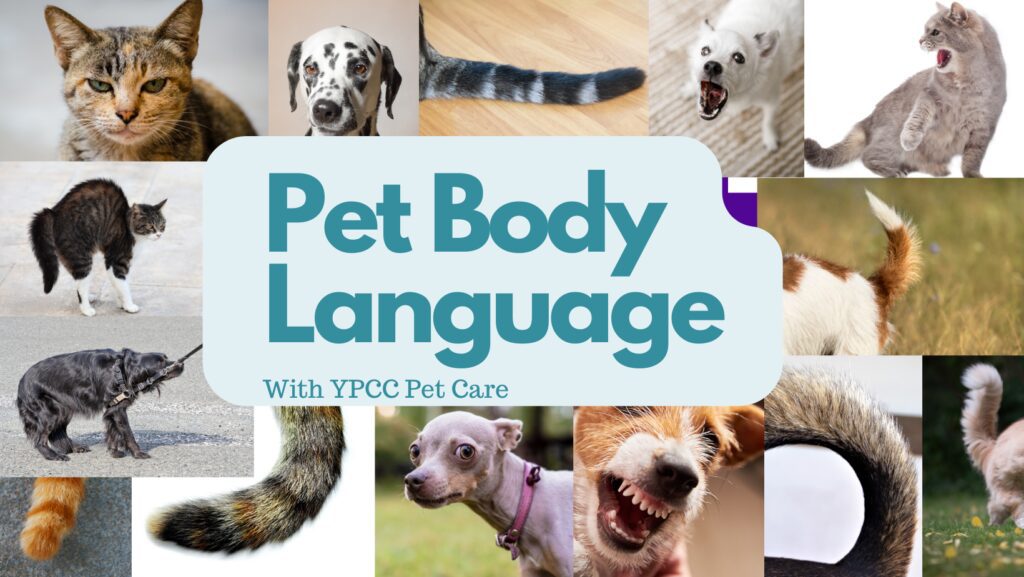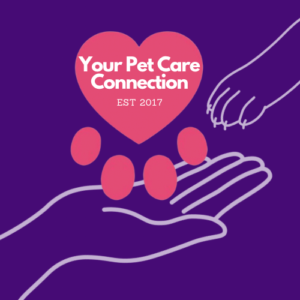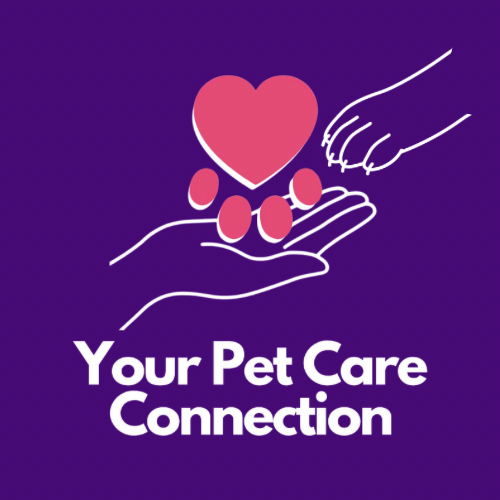How Moore County Pet Parents Can Read Their Pet’s Body Language
Pets are masters of non-verbal communication. While they may not be able to speak our language, they have their own ways of letting us know how they feel. Understanding more about your pet’s body language is crucial for strengthening your bond and ensuring their well-being. In this blog post, we’ll explore common body language signals in dogs and cats, helping you become more attuned to your furry friend’s emotions and needs.
There are many different combinations of signals pets can give their owners, or other animals, when trying to communicate. To understand these, we must first understand the 5 basic components that your pet uses to communicate these signals. In this month’s pet blog, Your Pet Care Connection LLC will go over the basics of both dog and cat body language and discuss their unique differences in behavior.

Understanding Dog Body Language
1. Tail Wagging:
- Happy and Relaxed: A *loose, wagging tail usually indicates a happy, relaxed dog.
- Alert or Aggressive: A stiff, high tail wagging slowly can signal alertness or aggression.
- Fearful or Anxious: A tucked tail often means the dog is scared or anxious.
2. Ears:
- Relaxed: Ears in a natural position indicate a relaxed dog.
- Alert: Ears perked up and facing forward show alertness and curiosity.
- Fearful: Ears pinned back against the head can signify fear or submission.
3. Eyes:
- Soft Gaze: A relaxed, soft gaze indicates a content dog.
- Staring: Direct staring can be a sign of dominance or aggression.
- Whale Eye: When the whites of the eyes are visible, it often means the dog is stressed or anxious.
4. Posture:
- Play Bow: Front legs stretched out with the rear in the air is an invitation to play.
- Stiff Body: A stiff, rigid posture can indicate tension or aggression.
- Cowering: Lowered body, often with a tucked tail, indicates fear or submission.
5. Mouth:
- Relaxed Jaw: An open mouth with a relaxed jaw often indicates a happy dog.
- Excessive Panting / Licking Lips: Frequent lip-licking or excessive panting can be a sign of anxiety or stress.
- Showing Teeth: Baring teeth, especially with a growl, is a clear sign of aggression.
Seems simple, right? Well, the truth is, it can get tricky. People aren’t the only masterminds at mixed signals, sometimes pets can give them too.
It’s important to note that a combination of these body signals, such as lip-licking pup with a wagging tail, can convey a completely different meaning entirely. While we might initially get a friendly impression from the wagging tail, this isn’t always the case.
Whenever a pet combines this tail wagging with other behaviors such as lip-licking, pressed ears, or low/slinky/rigid posture, it lets us know that the pet is actually quite nervous. At Your Pet Care Connection LLC, each of our Pet Care Specialists are thoroughly trained on how to properly read and interpret these mannerisms, and respect your pet’s individual care needs.
Understanding Cat Body Language
Just like dogs, cats also use 5 key components to help convey their emotions. However, as we well know, cats and dogs are very different. One of the ways cats and dogs differ is through their communication styles. Check out the five main cat-egories, of cat communication, below.
1. Tail:
- Upright and Quivering: A vertical tail that quivers slightly is a sign of a very happy cat.
- Puffed Up: A puffed-up tail signals fear or aggression.
- Tucked: A tail tucked close to the body indicates fear or submission.
2. Ears:
- Forward: Ears pointed forward indicate a curious and alert cat.
- Sideways or Back: Ears turned sideways or flattened back show irritation, fear, or aggression.
3. Eyes:
- Slow Blinks: Slow blinking is a sign of trust and affection.
- Dilated Pupils: Wide eyes with dilated pupils can indicate excitement or fear.
- Narrowed Eyes: Narrowed eyes may suggest aggression or annoyance.
4. Posture:
- Arched Back: An arched back with fur standing on end is a sign of a frightened or defensive cat.
- Crouching: A crouched position, with tail tucked, indicates fear or readiness to flee.
- Relaxed and Sprawled Out: A cat lying on its back or side with a relaxed posture is content and trusts you.
5. Vocalizations:
- Purring: Generally a sign of contentment, though it can sometimes indicate discomfort or illness.
- Hissing or Growling: Clear indicators of fear, aggression, or irritation.
- Chirping or Trilling: Often a sign of excitement or a friendly greeting.
Helpful Pet Behavioral Videos, For Our Visual Learners
If you’re interested in learning more about how to properly read your pet’s mannerisms, and other non-verbal communications pets use, YPCC recommends checking out these helpful learning links. Whether you’re an awesomely invested pet parent, or another professional caregiver like YPCC, these resources are a great resource for anyone who’s learning to effectively read and communicate with their pets.
Learn more about how cats communicate
Learn more about how dogs communicate
As professional pet caregivers, Your Pet Care Connection’s employees regularly engage in continued education, and refresher training. One of the professional pet caregiver resources YPCC utilizes, also provides pet parents with a free online resource. Check it out, and make your FREE learner account, here: Learn more, about pet safety, here: https://www.fetchfindtraining.com/collections/fetchfind-essentials
Using Professional Pet Care Services
Understanding your pet’s body language can also help you make informed decisions about their care, including when to use professional pet services. If you notice signs of stress or anxiety when you’re away, a professional pet sitter can provide the companionship and attention your pet needs to stay calm and happy. Similarly, regular dog walks can help alleviate pent-up energy and reduce stress, promoting overall well-being.
At Your Pet Care Connection LLC, our trained professionals are adept at reading and responding to pet body language, ensuring your furry family member receives the best care tailored to their unique needs. Whether it’s a midday walk or a pet sitting session, we’re here to help keep your pet happy, healthy, and understood.







